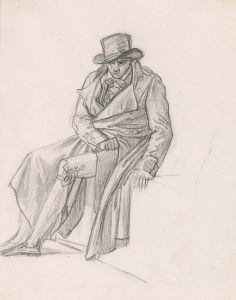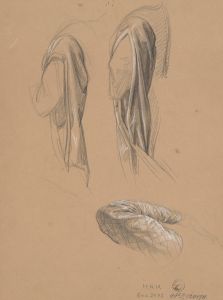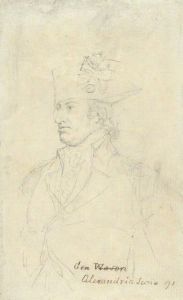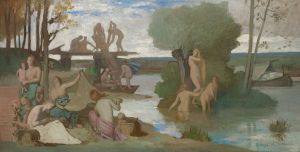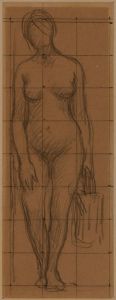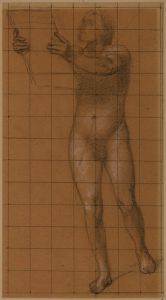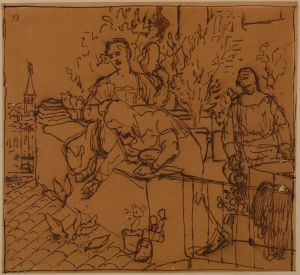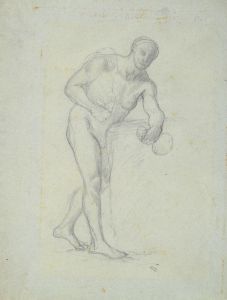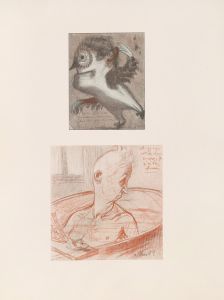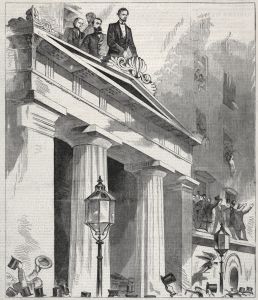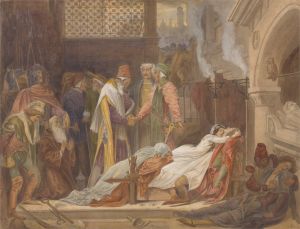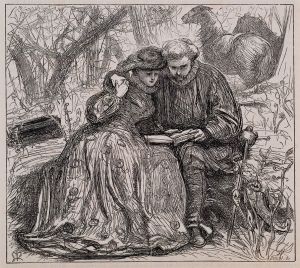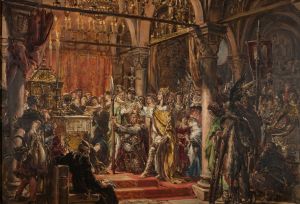
Ludus pro patria
A hand-painted replica of Pierre Puvis de Chavannes’s masterpiece Ludus pro patria, meticulously crafted by professional artists to capture the true essence of the original. Each piece is created with museum-quality canvas and rare mineral pigments, carefully painted by experienced artists with delicate brushstrokes and rich, layered colors to perfectly recreate the texture of the original artwork. Unlike machine-printed reproductions, this hand-painted version brings the painting to life, infused with the artist’s emotions and skill in every stroke. Whether for personal collection or home decoration, it instantly elevates the artistic atmosphere of any space.
"Ludus pro patria" is a notable painting by the French artist Pierre Puvis de Chavannes, created in 1883. Puvis de Chavannes is recognized for his significant contributions to 19th-century French art, particularly in the realm of mural painting. His works often reflect a classical style, characterized by their serene and harmonious compositions.
"Ludus pro patria," which translates to "Games for the Fatherland," is a large-scale mural that exemplifies Puvis de Chavannes' distinctive approach to art. The painting is part of a series commissioned for the Musée de Picardie in Amiens, France. This series was intended to celebrate the history and culture of the Picardy region, and "Ludus pro patria" specifically reflects themes of civic pride and communal values.
The composition of "Ludus pro patria" is marked by its balanced and orderly arrangement, a hallmark of Puvis de Chavannes' style. The painting depicts a group of young men engaged in athletic activities, symbolizing the vigor and vitality of youth dedicated to the service of their country. The figures are set against a backdrop of an idealized landscape, which enhances the timeless and universal quality of the scene. The use of muted colors and soft contours contributes to the painting's tranquil and contemplative atmosphere.
Puvis de Chavannes was known for his ability to convey complex themes through simple yet powerful imagery. In "Ludus pro patria," he explores the idea of physical and moral education as essential components of a strong and unified society. The painting reflects the 19th-century French ideals of patriotism and civic duty, resonating with contemporary audiences who valued these virtues.
The artist's technique in "Ludus pro patria" is notable for its fresco-like appearance, achieved through the use of oil on canvas. Puvis de Chavannes often employed this method to mimic the effect of traditional fresco painting, which was well-suited to the large-scale public works he frequently undertook. This technique allowed him to create a sense of permanence and monumentality, aligning with the historical and cultural significance of the subjects he depicted.
"Ludus pro patria" holds an important place in Puvis de Chavannes' oeuvre, as it encapsulates his artistic philosophy and his commitment to creating works that serve both aesthetic and didactic purposes. The painting's presence in the Musée de Picardie underscores its cultural importance and its role in the broader narrative of French art history.
Puvis de Chavannes' influence extended beyond his lifetime, impacting subsequent generations of artists, including the Symbolists and Post-Impressionists. His emphasis on harmony, simplicity, and the integration of art into public spaces inspired many who followed in his footsteps.
In summary, "Ludus pro patria" is a quintessential example of Pierre Puvis de Chavannes' artistic vision, reflecting his dedication to themes of patriotism, education, and the idealized human form. The painting remains a significant work within the context of 19th-century French art, celebrated for its aesthetic qualities and its enduring cultural resonance.





